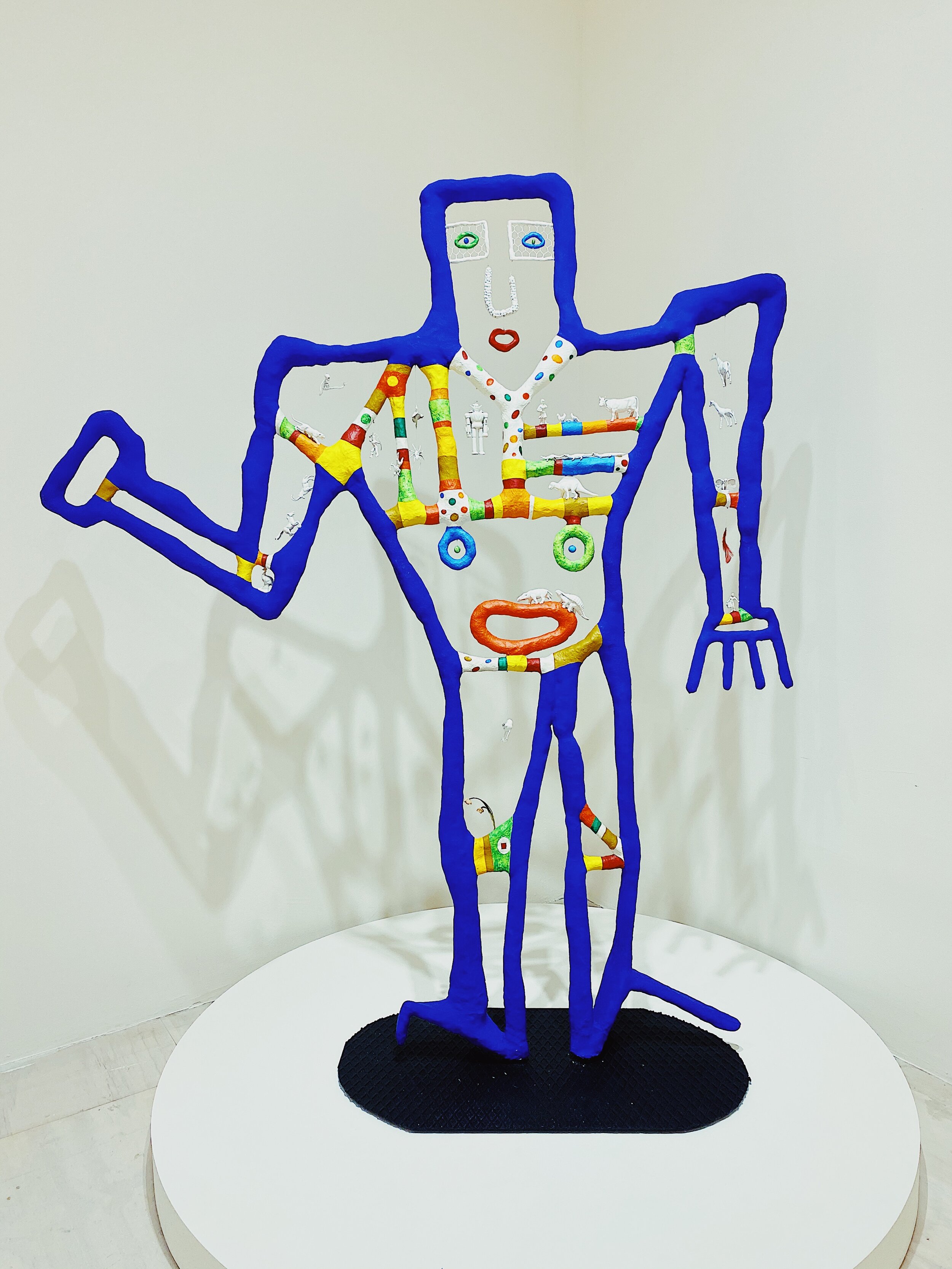Niki de Saint Phalle: Structures for Life
I was first introduced to Niki de Saint Phalle on the second floor of the Centre Pompidou in Paris. The 1961 work, entitled Tir, is characteristic of de Saint Phalle’s early style. Performative and boundary pushing, it features a bullet-riddled canvas, paint dripping like blood down towards the floor. I remember staring at the piece, hearing about how de Saint Phalle had created the work by shooting at bags of paint with a rifle. It evoked a single feeling for me: anger.
When I arrived at MoMA PS1 to see “Niki de Saint Phalle: Structures for Life,” the first full-scale exhibition on the artist in the US, I was surprised to be introduced to an entirely different kind of artist. Instead of the primal scream of bullet-addled canvases , I was met with colorful female figures, sleek perfume bottles and cheerful drawings.
The exhibition at PS1 doesn’t just seek to look back at de Saint Phalle’s legacy as a whole, but to reintroduce visitors to her world. It would be difficult to leave without a new impression of the artist, and the show aims to highlight her interdisciplinary approach. De Saint Phalle didn’t just shoot canvases or create Nanas, her iconic female figures. She experimented with the mediums of architecture and film, she designed theater sets, clothing, jewelry and even her own perfume.
Yet while the show presents a varied intersection of de Saint Phalle’s work, it is largely centered on her more palatable creations: her seemingly innocuous Nanas, her book about AIDS prevention and utopian sculpture parks.
Still, there is a common thread throughout. De Saint Phalle was a showman, not given to subtlety. The juxtaposition of the violent pieces from her earlier days mingling with the seemingly joyous femininity of her Nanas shows the many facets of an artist who, like all of us, was complex and complicated. After moving on from shooting paintings she pulled stunts like serving milk in a bar created in the breast of her monumental sculpture Hon in Stockholm. While her Nanas weren’t inflammatory in the same way as her shooting series, they were still controversial in their blatant celebration of female sexuality, a 1960s version of the Venus of Willendorf.
Showmanship can grow tiring, though, and what I was ultimately drawn to were not the totemic sculptures or battered canvases. Instead, it was de Saint Phalle’s cartoons and diaries that captured my attention. These works were less performative, more honest. While wading through the 200 works on display, I lingered longer over her diary entires, the detailed drawings for her utopian parks and works that were done for the artist herself, not for public consumption.
If you go to a museum show to see art, there is plenty to feast on at PS1. But if you wish to truly understand an artist, you will find these insights on the edges of this exhibition. Here, de Saint Phalle exists less in the eye-popping, towering works and more on the page. It was through these insights that I gained a new understanding of the artist, where she became less of an icon and more of a person.
Niki de Saint Phalle: Structures for Life
On view at MoMA PS1 through September 6th


